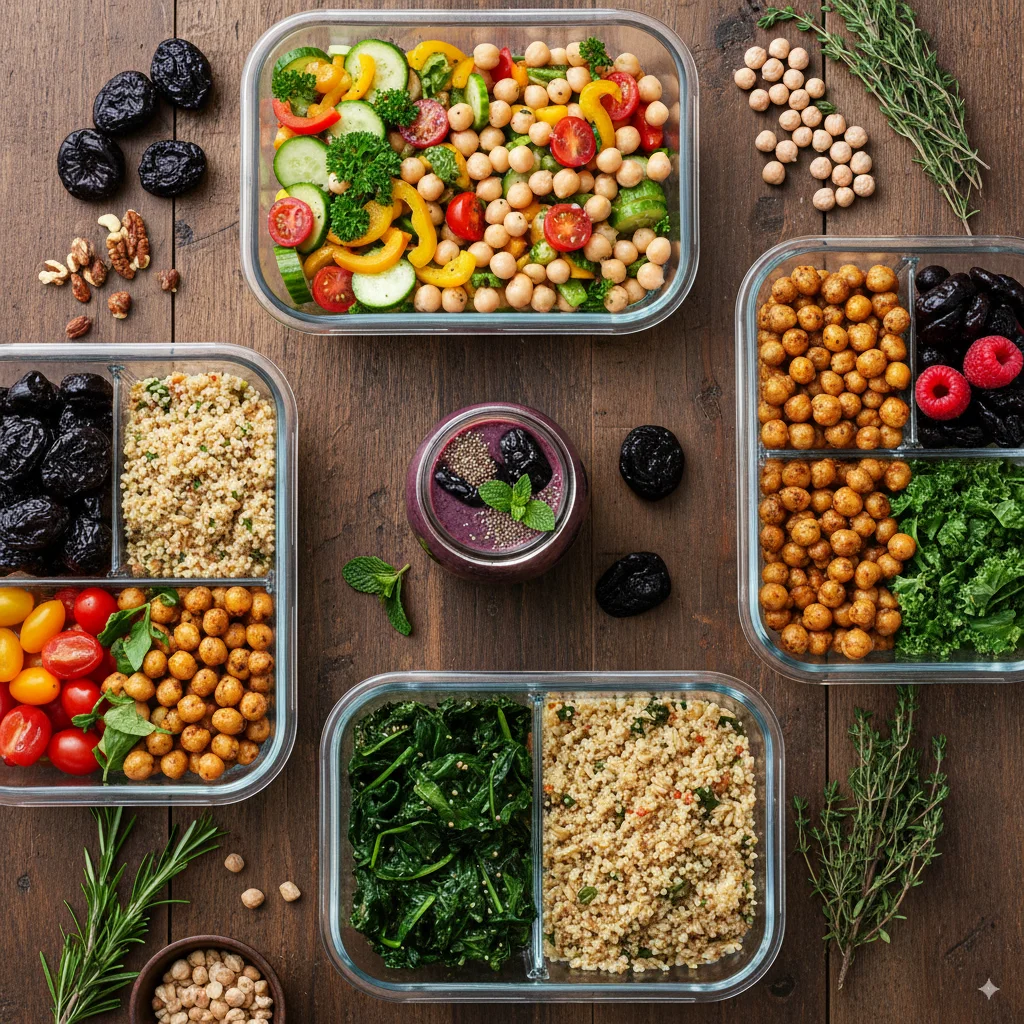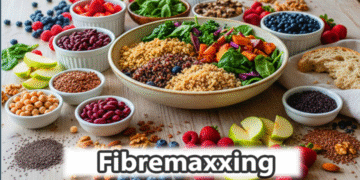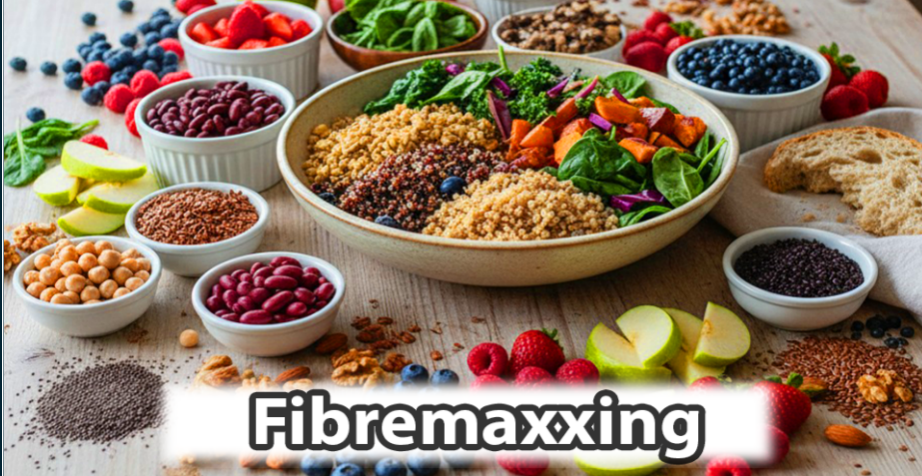In the dynamic world of health and lifestyle trends, 2025 has given rise to fibremaxxing — a wellness movement centered around boosting daily fiber intake through whole foods like vegetables, legumes, whole grains, nuts, and seeds. Unlike most fad diets that emphasize elimination or extreme restrictions, fibremaxxing emphasizes adding rather than subtracting. This shift toward positive reinforcement makes it easier to adopt, sustain, and reap long-term benefits. Experts are increasingly nodding in approval, and a surge of social media adoption shows it’s more than just a passing fad.
Fiber plays foundational roles throughout the body: it nurtures gut health, stabilizes blood sugar, promotes satiety, supports cardiovascular function, and may even influence mental well-being via the gut-brain axis. Yet, many populations—even in developed countries—fall far short of recommended fiber levels. In the UK, for example, 96 % of adults fail to reach the 30 g daily target, spurring nutritionists to praise fibremaxxing as a rare viral trend that aligns closely with established science.
One of the biggest strengths of fiber is its adaptability. You can phase it in gradually, rather than switching overnight. Start by swapping refined grains for whole versions—think brown rice in place of white, whole wheat bread instead of white, or plain oatmeal over sugary cereals. Add a handful of beans to soups or salads, snack on nuts and seeds, include fiber-rich fruits and vegetables at every meal, or toss in ground flaxseed or chia. These small choices accumulate. But ramping up too fast may lead to bloating, gas, or mineral absorption interference, especially if hydration isn’t sufficient. Hence gradual progression is key.
In addition to dietary improvements, fibremaxxing dovetails with broader wellness trajectories that emphasize prevention, personalization, and resilience. In 2025, the global wellness industry is increasingly shifting toward science-rooted solutions, preventive health, and functional nutrition techniques.Rather than chasing shortcuts, many consumers want interventions that integrate smoothly into daily life. Fibremaxxing fits that mold: it’s not a radical disruption but a reinforcing, additive strategy.
From a gut health perspective, fiber is indispensable. It feeds beneficial microbes in the colon, promoting the production of short-chain fatty acids like butyrate, which help maintain the intestinal barrier, reduce inflammation, and modulate immune function. When the gut ecosystem thrives, digestion, metabolic balance, and even neurotransmitter pathways benefit. This makes fibremaxxing a key ally in combatting chronic conditions like insulin resistance, metabolic syndrome, and inflammatory diseases.
Cardiovascular health also improves. Soluble fibers, found in oats, barley, psyllium, and legumes, can reduce LDL cholesterol by binding bile acids and promoting excretion. Over time, this lowers the burden of cholesterol synthesis. High fiber intake is correlated with lower blood pressure, reduced risk of stroke, and lower incidence of coronary disease. The cumulative effect over years may translate into millions of prevented cardiovascular events globally.

Satiety and weight management are additional advantages. Fiber increases the volume of food, slows gastric emptying, and moderates post-meal glucose spikes. These factors help regulate appetite and reduce overeating. For many, fibremaxxing becomes a sustainable foundation for long-term weight control, not a restrictive diet.
Emerging research suggests that dietary fiber might even play a protective role in cognitive health. Through the gut-brain axis, microbial metabolites may influence inflammation, neurotransmitter synthesis, and the integrity of the blood-brain barrier. While causality is still under investigation, population studies often find that diets rich in fiber and plant foods correlate with reduced risk of neurodegenerative diseases.
Another interesting dimension is how fibremaxxing aligns with closed-loop digital health and behavior sensing systems. Recent studies in behavioral sensing explore how sensors and real-time feedback mechanisms can guide ingestion behaviors. In other words, future apps or smart utensils might detect when you’re consuming low-fiber meals and suggest real-time corrections—say, prompting you to add vegetables or legumes. Fibremaxxing, being additive and modular, fits well within such responsive systems.
To execute fibremaxxing well, one must keep a few practical principles in mind. First, prioritize diversity. Different fibers (soluble, insoluble, fermentable, nonfermentable) feed different microbial species. A mix from fruits, vegetables, whole grains, legumes, nuts, and seeds ensures broad coverage. Second, hydration is essential—fiber without water can have the opposite effect, slowing digestion and causing discomfort. Third, gradual increase: add small increments (e.g., 2–5 grams per week) to reduce digestive side effects. Fourth, listen to your body: if you have digestive sensitivities (e.g., IBS), certain fibers may provoke discomfort; adjust accordingly. And fifth, pair fiber with other healthy practices—exercise, sleep, stress management—for synergistic benefits.
A few sample fiber-rich meal ideas: breakfast could be oatmeal topped with berries, chia, and walnuts; lunch might be a mixed bean salad with quinoa and vegetables; dinner may include lentil or chickpea curry with brown rice and side greens; snacks could be sliced apple with peanut butter or carrot sticks with hummus. Over time, aim to reach or exceed your target (for many adults, 25–35 g daily is a common benchmark; some guidelines go higher).
Critics may argue that fibremaxxing is not novel or dramatic, but that’s precisely its strength. Fad diets attract attention, but longevity lies in consistency. A trend that encourages more plants, more whole foods, and less ultra-processed intake is a nudge toward sustainable health. Also, because it complements—not replaces—other dietary principles, fibremaxxing can serve as a scaffolding upon which personalized nutrition strategies (e.g. genetic, intermittent fasting, low carb) can integrate.
As influencers and wellness media continue to amplify viral trends, fibremaxxing’s ascent is instructive: the health trends that endure tend to be biologically meaningful, low friction, and scientifically sound. Its alignment with preventive health, gut wellness, metabolic and cardiovascular protection, and emerging digital health paradigms makes it especially well poised for staying power.
In 2025 the spotlight is shifting from rigid diet fads to integrative, additive wellness strategies—and fibremaxxing stands at the forefront. By gradually increasing a variety of plant fibers in your daily diet, supporting hydration, and coupling with other healthy habits, you tap into a foundational pillar of health. Whether your goal is gut balance, weight control, heart protection, or even mental clarity, fibremaxxing offers a scientifically backed, sustainable, and flexible path toward improved wellness.
















